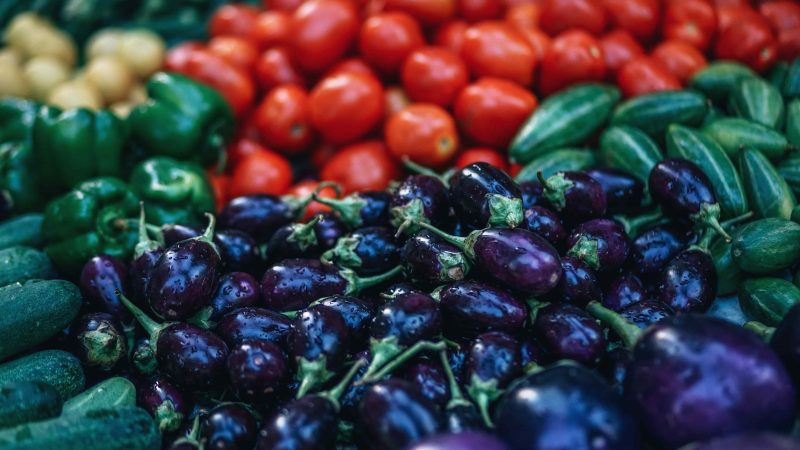
Vexing Vegetables – a Q&A with Dr Helen Coulthard
Are vegetables really so much nastier than sugary or salty tastes? Is texture the biggest turn-off? Do we inherit our sensory sensitivities? These are some of the questions that Mealtime Hostage Parenting Science Gang explored with Dr Helen Coulthard of De Montford University this week.
Image: Fancycrave on Unsplash
Helen: Hello. I am a researcher who specialises in fruit & vegetable consumption, food neophobia and picky/fussy eating across the lifespan (mainly specialising in childhood).
I am particularly interested in the role of sensory sensitivity, which is strongly related to food rejection in some children. Sensory sensitivity is a tendency to perceive and respond to relatively small changes within the environment.
PSG A: Welcome Helen Coulthard, great to have you here! 🙂
Helen: Thanks
Q: Hi Helen. Can you tell us a bit more about how sensory sensitivity is defined? To be “sensitive” do you have to tick a certain number of boxes about things that bother you?
Helen: We talk about different sensory domains, and you can be sensitive in some domains but not others (eg sound but not touch). For eating we have found that tactile processing is particularly important.
Q: What are the popular/most common ways of measuring levels of sensory sensitivity?
Helen: Often sensory sensitivity is measured by a questionnaire- the sensory profile
PSG B: So relying on parent/other report?
Helen: Yes…this is problematic. I have looked at behavioural measures of how much children enjoying playing with different substances, and this seems to be related to scores on sensory questionnaires.
The questionnaire asks about responses to sensory information, so it isn’t just about being sensitive but also how the individual responds. There are some behavioural measures and I have looked at these in adults. These measure threshold perception which is much harder to measure well.
PSG I: Helen – we’ve been introduced to validated measures, which is what I guess the sensory profile questionnaire is, but some of them have seemed a bit surprising to us. Particularly, as suggested above, the fact that lots are based on parental perception and report.
How happy are you with the sensory profile? Do you see areas that you’d like to improve upon?
Helen: I am not very happy with the sensory profile – it isn’t very reliable. So I tend have to do extra analyses when using it. It is also very expensive.
There is a place for parental report as a shorthand, as observational studies are very time consuming and don’t always capture general tendencies.
PSG B: Absolutely. No child research would ever be completed without it! Just helpful when there’s further validation.
Q: Why choose the sensory profile rather than the sensory processing measure? I personally find issues with both assessments (mostly because they rely on parent report) but I’m not sure of why one is better than the other?
Helen: I don’t know – I have just stuck with the one I started using!
PSG I: For those of us that aren’t familiar with the details, can you tell us very briefly how these are different?
Helen: What I would say about both of them is that they were designed to measure sensory processing dysregulation, whereas I am more interested only in low threshold or sensitivity items, which is slightly different.
PSG E: It’s difficult to summarise. The main difference – in my opinion – is how the results are presented. The sensory processing measure (SPM) offers categories of levels of dysfunction, whereas the sensory profile offers a descriptive profile of how a person responds to sensory stimuli. They’re useful as a guide but I’d struggle to rely on there for any definitive purpose, they are a useful part of building an overalls picture of a person’s sensory functioning.
Helen: I think it depends on your goal. If you want to diagnose children with sensory processing problems, then these measures serve a purpose. The problem is that they were not created as research tools.
Q: Anecdotally (thinking of myself as a child, my children and others I know!) many kids get less fussy with age. Is there evidence of sensory issues diminishing with age generally?
Helen: As far as I am aware there isn’t much evidence. But it makes sense that you gradually get used to the environment you live in – so it can be modified through sensory exposure.
Interesting adult picky eaters tend to still be more sensory sensitive than others.
PSG A: I was a really picky eater as a child. My son was asking me just today why I didn’t used to like tomatoes as his sister doesn’t. It was the texture – I remember how horrible it was! But now, I love them. Pure anecdata! 🙂 But it fits…
PSG B: Ha ha! I put myself through graded exposure with beans. Papery and mushy. Ugg! But I succeeded…
Helen: You have to want to change to overcome textural disgust responses.
I think children are often not motivated to change…they are happy eating foods they prefer. Interestingly vegetables, like tomatoes and beans, often have more mushy or slimy textures which we easily find disgusting.
Q: Which foods are most hated, in your experience?
Helen: Vegetables for children. For adults, it is often protein-based foods (such as meats).
Some foods are rejected because of texture e.g. mushrooms and tomatoes. Green vegetables have a slightly bitter taste which is more apparent to children.
PSG C: I was wondering if certain foods are particularly tricky for sensory sensitive people (eg I know several people who hate mushrooms, and they always talk about the texture). And might other foods be tricky for people who are more sensitive to taste or something?
Helen: Yes, I think that is the case. However it isn’t quite as simple to measure as you would think – for example there are multiple bitter taste receptors.
PSG C: Does that mean there are a bunch of different chemicals which can make something taste bitter, and, depending on what genes people have, they can taste different ones? So one thing could taste bitter to me, but not to you, and something else could taste bitter to you but not to me?
PSG D: Fresh tomatoes have always tasted bitter to me, even wee cherry ones that my mum calls ‘sweet’!
PSG C: Really? Isn’t that fascinating, tomatoes don’t taste remotely bitter to me. But Brussels sprouts do, and my mum doesn’t know what I’m talking about.
PSG D: I wish they didn’t, I’d love to enjoy them fresh but I can only eat fresh if they’re with lots of something else on the fork too to disguise the bitterness!! I agree with you about Brussels…though I used to enjoy peeling off layers to eat raw when I was a kid!!
Q: Do think there’s an evolutionary reason for kids not liking veg? e.g. I’ve heard it suggested that that veg are more bitter, poisonous things are more likely to be bitter, so it makes sense those who avoided bitter things before they were old enough to identify them reliably, survived.
Is this something that’s widely accepted or just an idea?
Helen: This has definitely been the theory about neophobia for years. However it doesn’t explain why some children won’t eat vegetables but will eat soil or berries.
There are so many other developmental changes going on at 12-18 months when neophobia first emerges – children start to be able to categorise objects, including foods. Also the type of foods children eat at this age often shift quite dramatically if parents aren’t giving finger foods from 6 months.
Q: Can parents do anything to cultivate a taste for vegetables?
Helen: Start with small and varied tastes. Mainly start with vegetables.
Fruits are very sweet, so babies will prefer them, but the initial phase of weaning is when most babies will eat a wide variety of foods.
Try to give tiny tastes and go for variety rather than amount.
Q: It’s interesting that some foods are hated more at certain times of the year. I wonder how many kids have an undiagnosed or under managed rhinitis etc. It’s interesting that tracking nose problems helps a good few kids!
Helen: That is interesting – smell is such an important part of the hedonic enjoyment of food and flavour perception (which is the amalgamation of taste and odour).
PSG F: Yes – I’ve definitely noticed: Pollen season = blocked nose + uncomfortable sensation eating certain fruit and vegetables.
Q: Do you know why sugary and salty food is embraced more quickly by some children than vegetables?
Helen: Sugar and salt are slightly different from each other. A preference for sweet occurs at birth – breast milk is very sweet and the suckle response to sweet liquids encourages survival.
Salt is gradually preferred over time.
Often sugary and salty tastes are in higher calorie foods, and liking for these foods develops more quickly.
PSG G: Do you have any idea why the salty taste is often preferred to vegetables?
Helen: Preference for salt and sour start to develop in the first six months of life. Vegetables are often bitter, which is aversive. Whereas we do need sodium so naturally develop a liking for it.
Q: My 2 year old has, I feel, oral hypersensitivity from the effects of previous tongue tie. She still prefers Meltables and Mashables, and won’t really eat meat at home, and veg-wise, only broccoli and mushroom consistently.
Are there any exercises or tips I can be doing to increase her consumption from a sensory perspective?
Helen: That is a really great question.
From a speech therapy/occupational therapy perspective there are techniques for reducing oral hypersensitivity. Have you tried any of these?
PSG H: No, we haven’t seen anyone yet for it. We are waiting to see a speech-language therapist for a dysphagia assessment but I doubt I will get any support. I am an occupational therapist myself but no experience in Paediatrics.
I personally do not like being messy (hate making biscuit doughs etc with my hands) and I’m concerned I’ve passed that down to my daughter and missed a sensory window for tactile play. I’m not sure what techniques there are.
Helen: She is still very young, however there does seem to be associations between dislike of sensation in children and their parents. It is hard to say if it the environment or genetics, but probably both!
There is a technique called sensory brushing. I know a speech-language therapist from a children’s hospital and she used to use this for children with oral hypersensitivity. However I am not a clinician!
PSG H: I’ll enquire about it when we have our assessment, thank you.
Helen: In terms of my research, we have been getting good results when we get children to take part in non taste, messy play activities where there is no pressure to try.
PSG I: How do you pair the messy play textures with the tasting textures? Is it as simple as playing with tomatoes may lead to being prepared to taste a tomato or is it more about familiarity with a certain type of texture leading to willingness to taste foods that the child perceives to have that texture?
Or is it more about developing general confidence in dealing with new textures?
Helen: There is a really great researcher in the Netherlands called Chantal Nederkoorn who is trying to create non-food textures that mimic the actual food textures. A lot of the research is playing with the actual fruits and vegetables.
So you could argue that it is fun familiarisation which reduces anxiety rather than sensory desensitisation pre se.
PSG C: My son absolutely loves messy play, going barefoot, etc. But he still won’t taste a new vegetable! Last week he sat happily playing with mashed potato for hours, like it was playdoh, but he wouldn’t taste it at all. What else could we try? Is he just awkward?:-)
Helen: Not all food neophobia is caused by sensory sensitivity. My elder daughter was similar – she has a very small appetite but was also very imaginative. So she found certain things disgusting – noodles as worms, tomatoes as lips….
Sometimes children categorise foods very rigidly into ‘like’ and ‘don’t like ‘ categories.
It could also be that he is sensitive to bitter?
The messy play association seems to be associated with textures, so not liking mush on the hands is associated with not liking mushy textures in the mouth.
PSG C: Thanks. That’s really interesting. Do you think that selective eating can have very different underlying causes then?
Helen: Although I mainly look at sensory processing, you can have post traumatic reactions from severe illnesses/choking which causes extreme anxiety around eating.
It is also very common in autism spectrum, which may be more rigid. Some argue that this is due to sensory processing difference.
PSG K: So an activity like baking would be a good one? Only one of my children likes to bake but both are selective eaters.
Helen: Any activity where children are touching substances with their fingers is great, but it must be driven by them.
Some children absolutely hate these activities!
PSG I: yep – that’s my eldest. Totally hates weird texture play. Though he is an adventurous eater, so go figure!!
Helen: That is the problem with research – we are always looking at general tendencies. There is always someone who doesn’t fit the pattern and there are many routes to the same behavioural outcome!
PSG K: And my eldest hates a lot of textures but eats smoked salmon ?
Helen: Were they given smoked salmon from an early age?
PSG K: Yes, one Christmas there was smoked salmon on brown bread, he asked to try it and liked it. He was maybe 2 or 3 at the time.
Helen: We have a game called the Restaurant Plating Game where children arrange a lovely plate full of fruit whilst pretending to be a chef. If their hands are clean then it can be eaten.
Choosing food in the supermarket is a sensory activity, even if it isn’t mushy.
Using non-food sensory play doesn’t lead to food waste.
PSG E: I think it is a misconception that messy play has to be wet, mushy, slimy textures – this is something to work up to. But for hesitant, sensitive children, dry, crunchy texture can be just as helpful as a starting point.
Helen: Exactly. You are the expert on your own child. With more sensitive children you need to take baby steps.
The trick is to develop a positive relationship with food and with some children this takes a long time.
PSG F: We do a lot of non-food sensory play starting with whole body before we even work with the hands and mouth. Pinterest is full of wonderful ideas!
Helen: Also, it is fine for them to not like some foods – our taste preferences are part of our individuality!
Wwe live in a very strange food environment with a glut of variety.
Q: Thanks Helen. Do you ever get concerned about hide this works with food and money waste, especially in cases where a parent particularly buys organic?
Helen: Yes – I think that is interesting. But you can find ways around this.
One way of not wasting lots of refused vegetables would be to offer tiny tastes of foods so you are not throwing much away. It can be disheartening!
Q: What do you think of the idea of hiding vegetables in food, like in smoothies?
Helen: That may increase nutritional intake, but it doesn’t develop a liking for the food in question. It depends what your goal is!!
Q: I’ve seen picky eating across the spectrum of ages. My one major concern is the number of nutrient deficiencies we are picking up e.g. zinc, selenium. I even saw a Vitamin K one recently. The Gut mircobiome has to factor in there also. I wonder about the impact of treating low ferritin and zinc levels – we do see kids trying more foods if they feel better in general.
Helen: Luckily nutritional deficiencies can often be remedied (as long as it isn’t an absorption problem). But it isn’t only nutritional problems – it is also the social problems from not being able to socialise over food, which is so fundamental to most cultures.
PSG K: Very true Helen, at least for us anyway. I’d love for us all to be able to go out for a family meal and for not have to scour the menu ahead of time for something or anything they could eat.
Q: Do you have any thoughts on why some children are reported to eat well at nursery but are then extremely picky at home leaving parents with the perception they are sensitive to taste and texture?
Helen: This is an interesting one. There can be a social facilitation effect, so children eat more in the company of other children.
But also, I do wonder if nurseries are motivated to report high consumption.
PSG E: This is something I’ve wondered too!
Helen: They also quite often give a lot of puddings!
PSG I: I find it absolutely fascinating that parents often feel that their kids eat totally differently at nursery.
PSG E: And that Drs and professionals recommend nursery as a treatment modality for children struggling to eat. Seems a strange thing to do with no evidence base to support it.
Q: What do you think are the biggest obstacles for you to overcome in your area of research?
Helen: Generally this area of research tends to be very descriptive. My challenge is to devise new interventions and experiments to look at techniques which may increase tasting in children.
PSG J: It’s really interesting work! Do you find your area well supported by funding bodies? We’ve seen before that it’s not seen as an important area as the public see ‘fussy eating’ as normal and we should just live with it until they grow out.
Helen: There is a new diagnosis called ARFID – avoidant and restrictive food intake disorder. Many individuals with ARFID have sensory issues and it is now seen as a lifespan disorder as some people get very fixed in picky eating behaviour.
Hopefully this will drive research funding. Sorry that was a roundabout response!
It is very hard to get funding in this area.
So much thanks to Helen for her time and all her work and achievements despite finding funding so hard to find.
If this has interested you, why not find out more about selective/avoidant eating from some of our other Q&As:
- Positive Feeding Relationships with Prof Jackie Blissett
- Researching Avoidant/Restrictive Food Intake Disorder (ARFID) with Dr Terry Dovey
- Extreme Picky Eating with Jenny McGlothlin
You can read all our Q&A sessions, on loads of different parenting-related subjects on the website.


